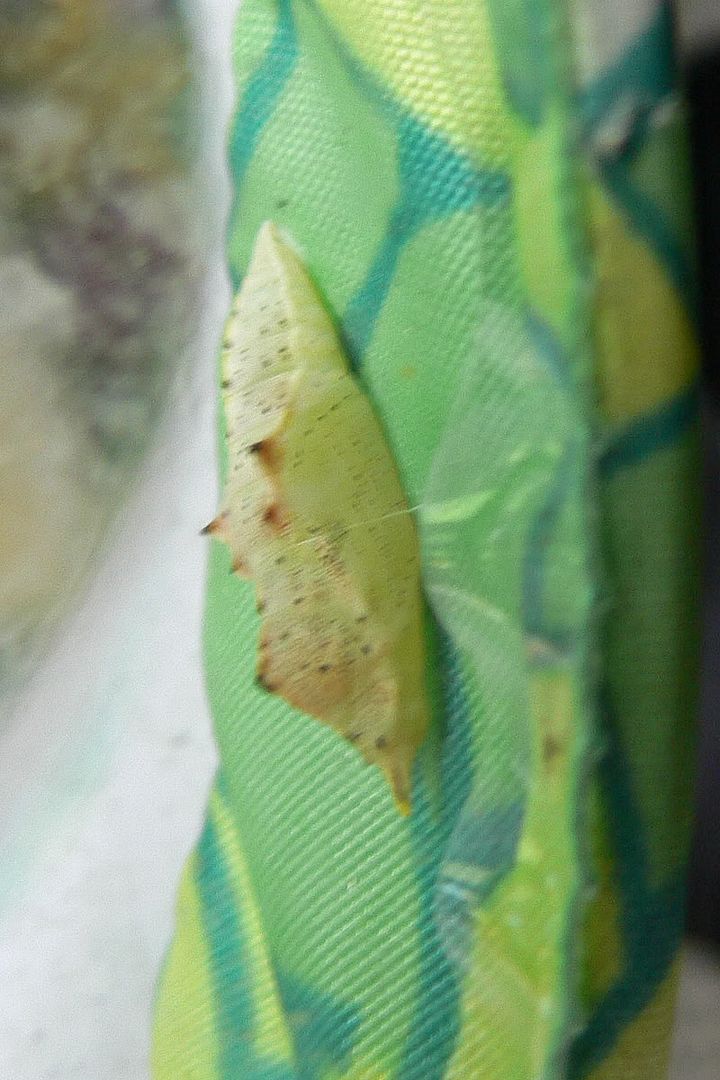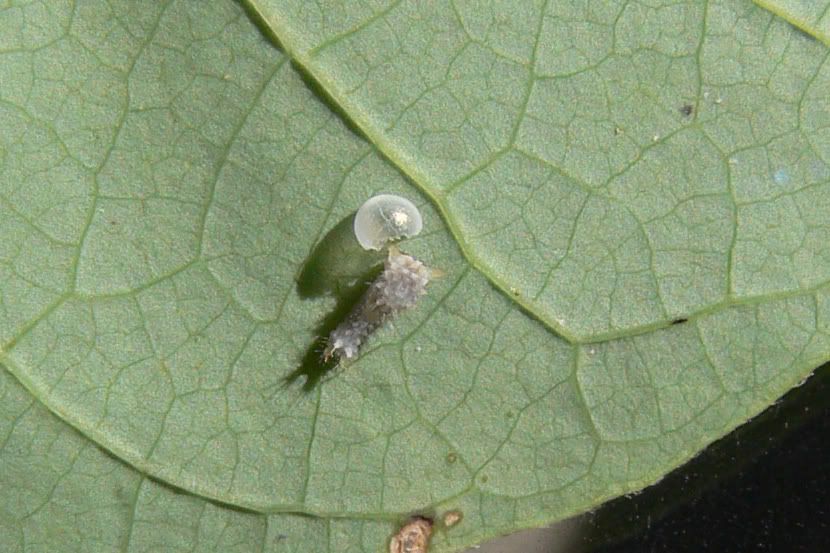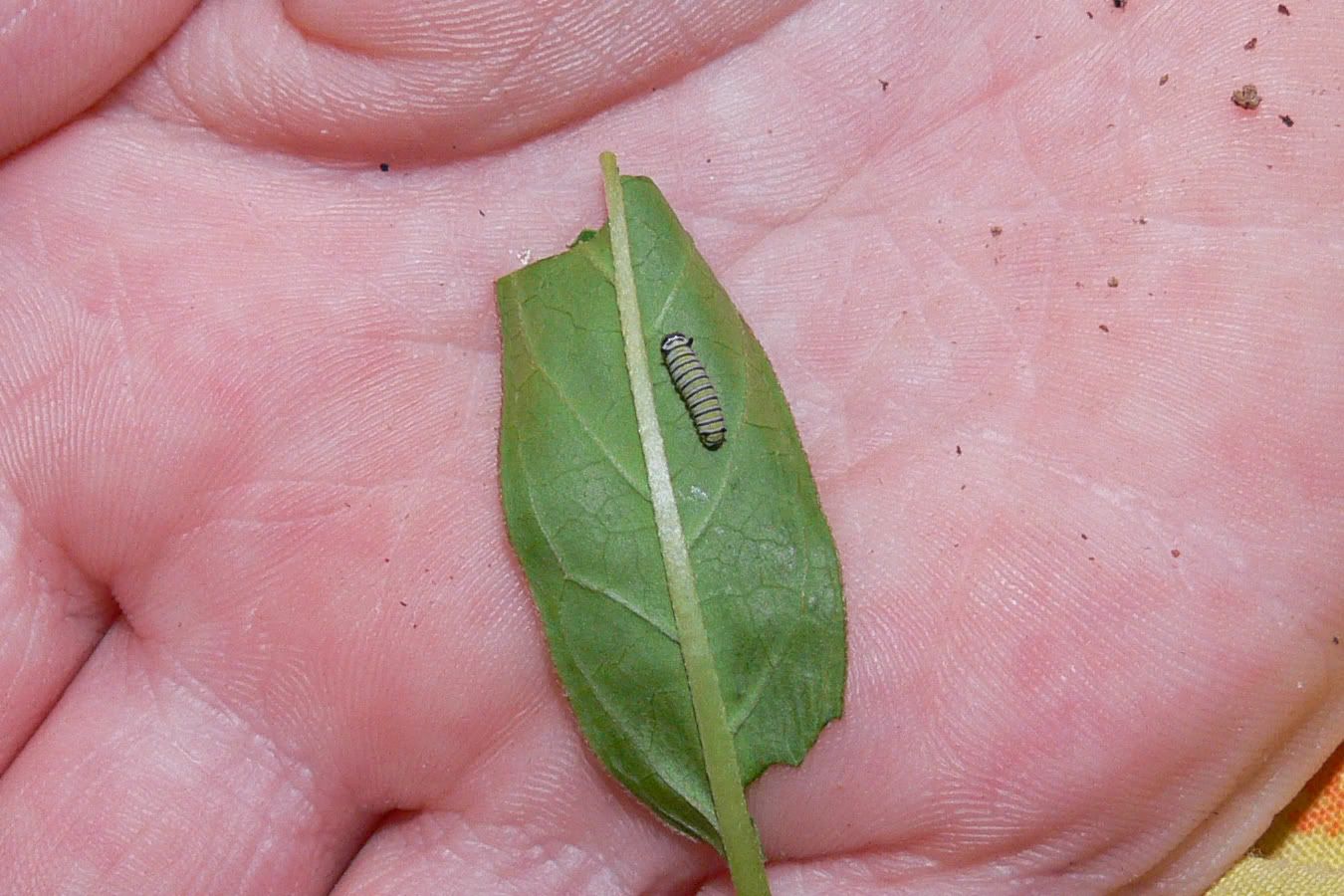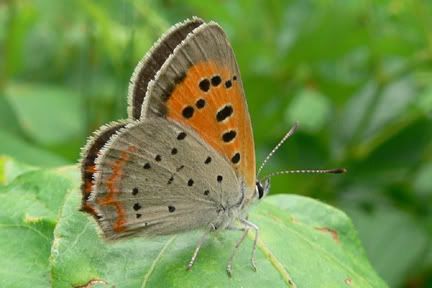As of this week, we've had a banner year for caterpillar raising.
In July, we raised 29 Cabbage White Pieris rapae caterpillars and eggs found on a weedy mustard with yellow flowers in our yard.P. rapae caterpillar on mustard Brassicaceae

P. rapae chrysalis. The "silk support girdle" is just barely visible around the middle. The chrysali ranged in color from green to brown.

Two weeks ago, I found a momma Variegated Fritillary Euptoieta claudia laying eggs on some violets; I collected 2 and now have two cats.E. claudia caterpillar on Violet (viola sp.)

Then we found a Spicebush Swallowtail Papilio troilus egg, which hatched yesterday.P. troilus egg on spicebush (Lindera benzoin)

Freshly hatched P. troilus with egg chorion still on him. Within two hours, he had consumed the egg-shell and was much darker

Then followed a veritable army of Milkweed Tussock Moth Euchaetes egle caterpillars. We're raising ONE and ONLY ONE.The lucky Tussock Moth cat. He looks ready to pupate.

Then, three days ago, I saw a Monarch Danaus plexippus laying on the newly planted swamp milkweed. YES! With all said and done, we have 39 Monarch caterpillars and eggs. Yikes!One batch of collected D. plexippus. Leaves on the left have cats; leaves on the right have eggs.

D. plexippus egg ready to hatch. Note the ribbed, cylindrical shape that contrasts with the spherical shape of Papilio eggs.

D. plexippus caterpillar consuming eggshell right after hatching

D. plexippus caterpillar hanging out on Swamp Milkweed (Asclepius incarnata). The hand is a child's, for size comparison.

This is a record for both number of species raised (4 5 6 7) and for total number of cats raised (72 legion, if all are successful).
Update: we've continued to find Monarch cats on the Asclepia incarnata. Go milkweed! Also, the dill produced a large Black Swallowtail caterpillar who will probably be a chrysalis by morning. I've also found a couple of Common Sootywing cats on lambsquarter, but I'm leaving them to overwinter in their leaves.
Update 10/23/08: In the end, many of the Monarch eggs didn't make it. It was my fault for putting the day-old caterpillars in with larger ones. They simply disappeared, and I fear they were cannibalized. With all that, we released 36 healthy Monarchs, 2 Variagated Fritillaries, and 29 Cabbage Whites this year, and we have one pupa each of Black Swallowtail, Spicebush Swallowtail, and Tussock Moth that are overwintering.
JRC
Sunday, August 17, 2008
Raising Caterpillars 2008
Posted by
Jeff Cagle
at
6:16 PM
![]()
Labels: Butterflies
Subscribe to:
Post Comments (Atom)

3 comments:
Jeff, I came across something in Turretin on justification that impacts upon your view of baptism working retrospectively. Its on page 665 volume II, Third Proposition: remission is extended to all sins; XVII.
His point is that future sins cannot be remitted in advance, because there is no guilt until the offence is actually committed. "As long as the sin is not, punishment is not due to it." pg. 665; Par. 2; line 4.
It occurred to me that the same thing applies to baptism's efficacy - one cannot have the efficacy of baptism until it has been administered.
Roger
That's interesting. I'm waiting for Turretin to become affordable.
But now, I want to consider this a bit further. It is customary to say that
(1) Upon belief, all one's sins are forgiven -- past, present, and future.
(2) Jesus' death paid for the sins of His people -- and all of the sins were future at that time.
So, there's more to this than meets the eye. Clearly, I need to find Turretin.
Thanks,
Jeff
I am going to try to scan the page and send it to your email address. Mine is (one word) roger du barry at talk talk dot net. Drop me a line and I will return it to you.
Post a Comment